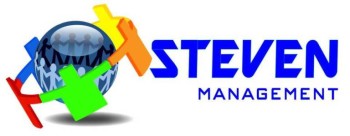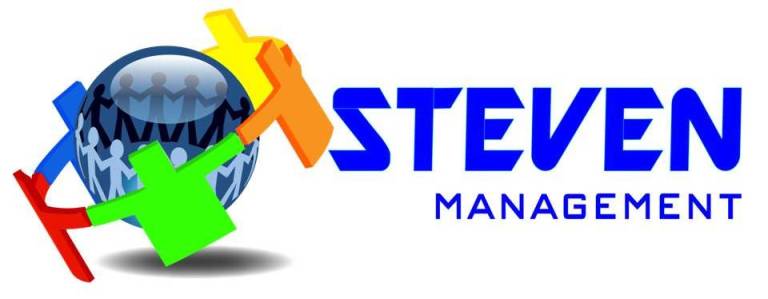![glossary&definitions]() Cutting Through the Foreign Language of Online Marketing
Cutting Through the Foreign Language of Online Marketing
Most business owners are pretty well lost when it comes to understanding the technical workings of building and maintaining a solid online marketing program. And, often the terms and language used in the process is confusing at best; and a completely foreign language at worst. I sometimes tell my techie friends that, like lawyers, they invented their own language so that no one else could understand what they are doing.
So, to help you understand the process a little better, here are some of the most commonly used terms and phrases in the industry. I’ve reformatted the definitions into easy to understand language. Understanding the language is one of the keys to translating your business needs into a program that will help you dominate your local market and bring in more customers. After all, that’s your goal, isn’t it?
Article Marketing
A type of advertising in which businesses write short articles related to their industry. These articles are made available for publication and distribution in the marketplace. The articles can be on your website, or other websites, blogs, etc. From there they get backlinked to your site.
Each article contains a bio box and a byline that include references and contact information for the author’s business. Well written articles released for free distribution have the potential of increasing the authoring business’ credibility within its market as well as attracting new clients.
Effective articles have a call to action section and/or a link directing the reader go do somewhere or do something. Articles always should be backlinked to your website to increase traffic and improve the credibility of your website with Google crawlers.
For more information, read the information on this site about the importance of writing quality articles.
Backlinks
A backlink is essentially the same thing as an inlink. It is a link on someone else’s site that links people back to your own website. It is extremely important to garner a large number of backlinks that are reputably obtained for several reasons. First, in SEO (Search Engine Optimization), part of the algorithm for where your page ranks on search engines is, in part, determined by the number and quality of backlinks to your site, providing they occur naturally and you have not purchased them. Second, backlinks are how you get known on the Internet. If lots of other sites provide a link to yours, a natural increase in traffic to your web pages occurs and it will help quickly raise your position in a keyword search.
Here’s some more information about backlinks, how to obtain them, and their importance to your website ranking.
CSS
Cascading Style Sheet (CSS) is a way to design a website, or a group of websites, so that they have a consistent look and feel, and so that their look and feel is easy to change. By using CSS to design a website, the web developer gains a greater degree of control over how the site appears.
A web developer can use a CSS file to control the look of a website in three main ways.
1. The first way is called inline, referring to the fact that the CSS code is placed right into the line of the website code. For example, a web developer might want to make a particular sentence appear in bold, red type so that it stands out. They could use CSS to set the style of that sentence to bold and red using inline CSS. The benefit of inline CSS is that it allows a quick and easy change to a particular part of a web page.
2. Another way that a web developer can use CSS is to make rules for an entire web page. In this case, the developer would use what is called embedded CSS. The developer can, for example, make each new paragraph indent and each header in bold. The embedded CSS instructions are usually placed at the top of the web page’s code.
This allows the developer to change the embedded CSS once and have the effects take place throughout the entire page. If he decided to put all headers in italics rather than bold text, he could simply change the embedded CSS, and all the headers on that page would change. This has an advantage over inline CSS in that it covers the entire web page, and changes can be made to the entire page at once.
3. The final common type of CSS is what is known as an external CSS. A web developer will write the CSS code to apply to an entire group of web pages, a whole website, or even multiple web sites. These CSS rules can include things like background color, text color, word spacing, and other elements of page layout, just like the previous two examples of CSS. Most website templates have this code already build in when you download them.
The difference is that these instructions are not for a single section of the page, or just one web page, but for an entire website. The advantage is that the look and feel of an entire website can be changed at one time by making changes to the external CSS. If the designer wants to try a new background color or a new font for the entire website, she can do so with the change of a few lines in the external CSS, rather than going to each page individually and making changes there.
HTML
HTML stands for Hyper Text Markup Language. It is a type of computer language that is primarily used for files that are posted on the internet and viewed by web browsers. HTML files can also be sent via email.
Although it may seem complex to the uninitiated, HTML is relatively simple. All text, graphics, and design elements of a web page are “tagged” with codes that instruct the web browser how to display the files. Such files are easy to recognize because they contain the file extension such as ‘html’ or ‘htm.’
Meta tags
A meta tag is a line of HTML coding that contains metadata about a webpage. Meta tag information doesn’t change how the page looks; it won’t be seen by the website viewer, unless they are viewing your source code. There are two common types of meta tags — meta description tags and meta keywords tags.
Meta description tags describe, in some way, the webpage. For instance for this wiseGEEK article page, we might use “everything you want to know about meta tags.” The meta keywords tag lists other words that a visitor might be searching for, like meta tags, meta tag, HTML and meta tags, tags, SEO.
Both types of tags are located in the heading section of your HTML code and usually below the title. You might have the following heading for your webpage:
<HEAD>
<TITLE>How to Create a Meta Tag</TITLE>
<META name =“description” content=”Everything you want to know about Meta Tags”>
<META name =”keywords” content=”meta, meta tags, meta tag, HTML and meta tags, tags, SEO”>
</HEAD>
The purpose of meta tags is to inform web crawlers about your page. They existed before search engines, but today, they primarily used in terms of Search Engine Optimization (SEO). Using them may help web crawlers more easily index your pages in search engines, but not all web crawlers or robots pay attention to these tags anymore. Some still do though, and learning how to create a meta tag on each page may help promote greater visibility on certain search engines, and may increase the likelihood of your page coming up as a choice when people search under alternate but related names to your content.
Some web crawlers may ignore a meta description tag and even substitute its own . This is true of some of the bigger search engines like Google. Smaller search engines may specifically use your description meta tag as the page description, so be certain about what you put in there.
RSS
RSS or Really Simple Syndication is a useful tool for keeping updated on your favorite websites. RSS makes use of an XML code that constantly scans the content of a website for updates and then broadcasts those updates to all subscribers through a feed.
RSS feeds are typically used with news sites or blogs, although any website can use them to disseminate information. When an update is sent out, it includes a headline and a small amount of text, either a summary or the lead-in to the larger story. You will need to click a link to read more.
In order to receive RSS feeds, you must have an aggregator, a feed reader. There are a number of aggregators online, many of them free, so with a little bit of searching, you should be able to find an interface that appeals to you. In addition to being available on your computer, RSS feeds can also be read on PDAs and cell phones.
When you come across a website you would like to add to your aggregator, you can do so in one of two ways. Most sites that offer an RSS feed have an “RSS” or “XML” button on their homepage that you can click on and it will instantly add that feed to your aggregator. Depending on your aggregator, you may instead need to copy and paste the URL of the feed into the program.
By either method, the feed will be available as soon as you’ve added it, and your next update could arrive in seconds. If you ever decide that you don’t want to receive updates anymore, you simply delete the feed or URL from your aggregator.
Perhaps you already receive information on website updates through some sort of e-mail newsletter. Google has an aggregator that allows you to select a news topic and have press releases on that topic (or even word) sent to your e-mail every day. RSS feeds are preferable to newsletter updates because they are instantaneous; you don’t have to wait until a designated day of the week to receive your summary. They will also never be held up by a spam filter.
Social Bookmarking
Social bookmarking is a method of networking in which users save and share links to Internet content which they believe may be of interest to others. It is among a large family of activities which people can engage in as a form of social networking. A number of sites offer social bookmarking services and some have very large and active communities. Many bloggers and other people who work online engage heavily in social bookmarking as a promotional tool and method of sharing information.
A user on a social bookmarking site identifies a link of interest and “bookmarks” or saves it with the site. Many such sites have widgets which can be installed in a browser, allowing the user to click a single button to bookmark a page as opposed to having to go to the social bookmarking site and paste in the link. Clicking that button typically pulls up some options which the user can employ to tag the content to make it easier to find.
An individual user on a social bookmarking site will have a list of links of interest which can be sorted by tags, dates, and other parameters. That list may be viewable to the public or private, in which case it can only be seen by friends. People browsing such sites can follow users who tend to find content which interests them, and individual bookmarks can spawn their own discussion pages in which people talk about the content and share related links.
It is also possible to enable a submission feature on a social bookmarking page. For example, a website which covers auto racing issues might invite users to submit links of auto racing interest. This allows site users to draw the attention of the site owners to specific articles and sites which may interest them. It also creates more opportunities for social networking, as other site users can see recommended links and explore both the links and the people who recommended them.
Web 2.0
Web 2.0 is a buzzword that exploded in popularity sometime in 2005. In 2004, software guru Tim O’Reilly founded the Web 2.0 Conference now held annually in San Francisco. It has since expanded from a conference into a way of thinking, a new approach to doing business on the Internet. There is no standard definition for web 2.0, as it is a cluster of ideas rather than anything clear-cut. However, O’Reilly’s comments on the topic are seen as having special authority, and rank among the top Google search results for the term.
The first premise of web 2.0 is leveraging the power of the user. For example, fluid user tagging of content would be used instead of a centralized taxonomy (things are arranged and classified to provide order). Web 2.0 entrepreneurs often consider the Long Tail, which is basically an understanding that the vast majority of the attention market is based on niche content. Web 2.0 is radically decentralized, as in the case of BitTorrent, a collaborative downloading co-op that consumes a serious portion of all Internet traffic.
Blogs are considered web 2.0. Instead of centralized “personal home pages”, blogs let people easily post as much or as little as they want as rarely or as frequently as they want. Feed aggregators ensure that people only need to visit a single site to see all the feeds they subscribe to. Comments are enabled everywhere, allowing people to participate rather than passively consume content.
The web page Digg is an example of web 2.0. Unlike traditional news pages for which editors choose the top stories, Digg’s front page content is determined by the voting of many thousands of users. The more votes a story gets, the more likely it is to be featured on the front page.
Web 2.0 marketing is supposed to be viral – that is, happy users encouraging their friends to use a product, rather than massive advertising brainwashing people into doing so. This ties in with the idea of “permission marketing” – marketing that actually gets the permission of its targets rather than shoving an ad in someone’s face against their will. Some people call web 2.0 just another bubble like the first. Only time will tell whether these companies are truly profitable or “merely” trendy and useful.


